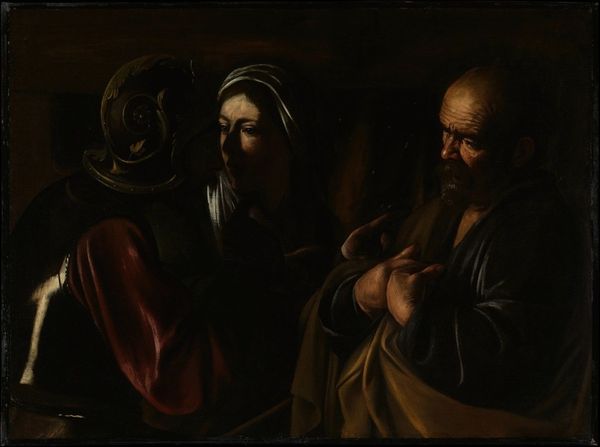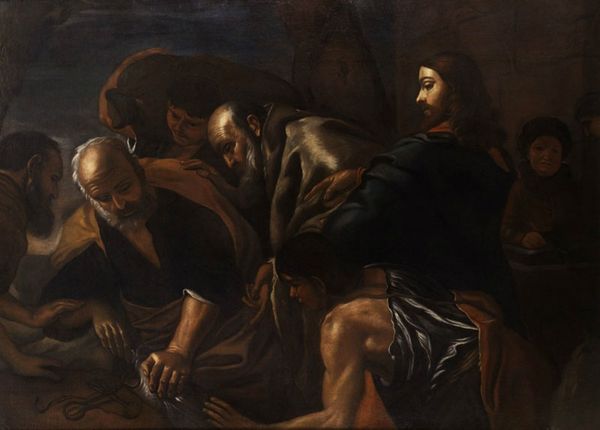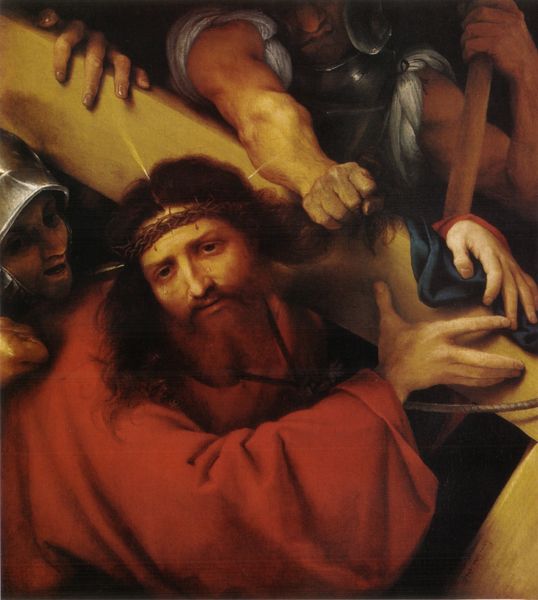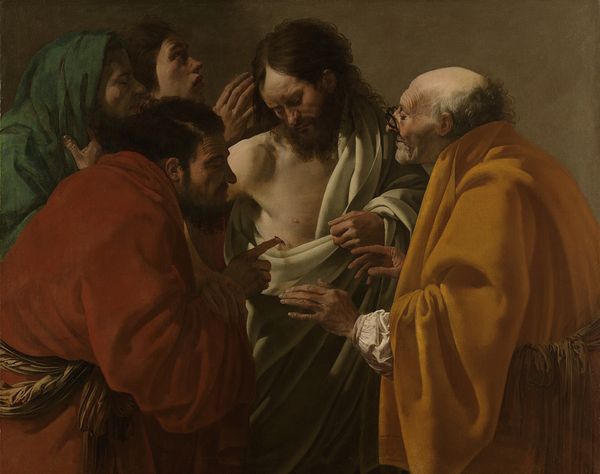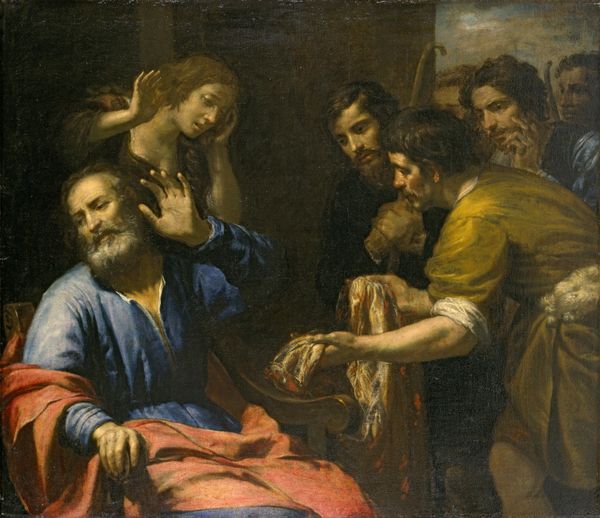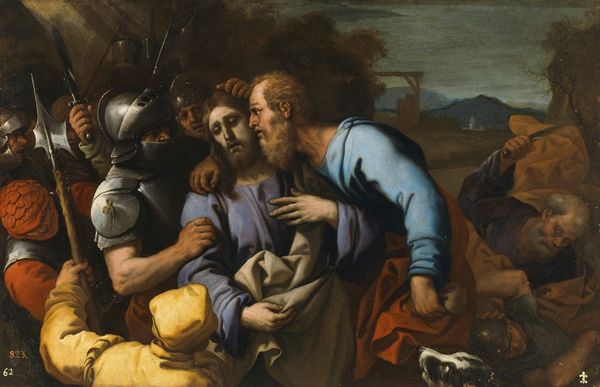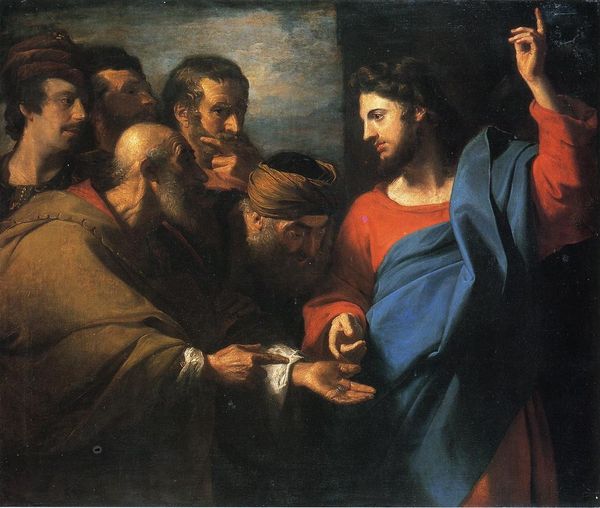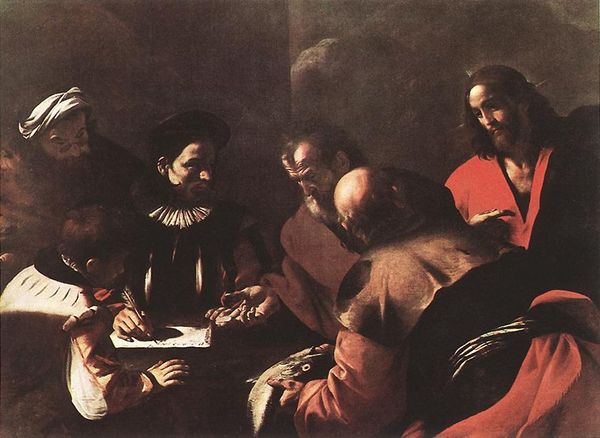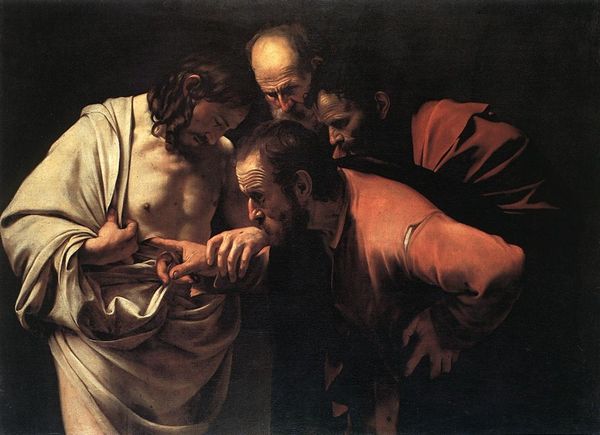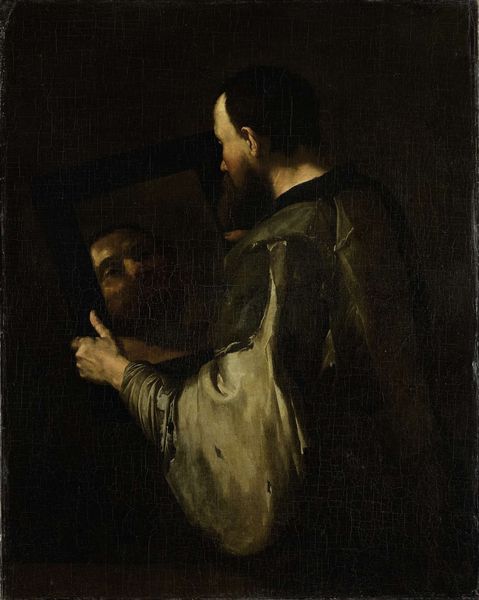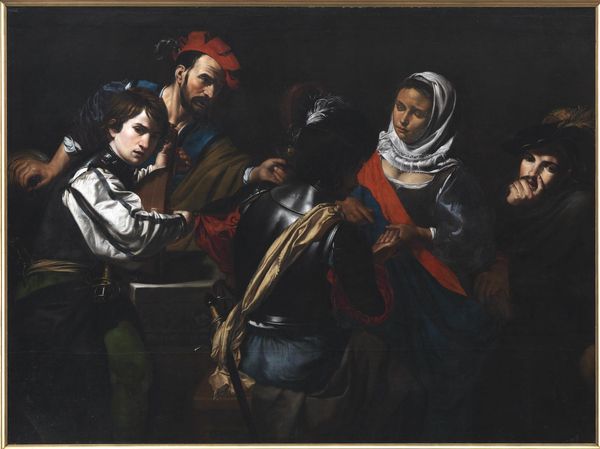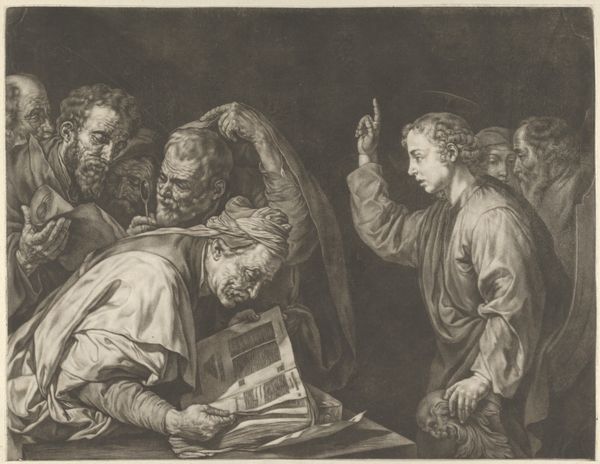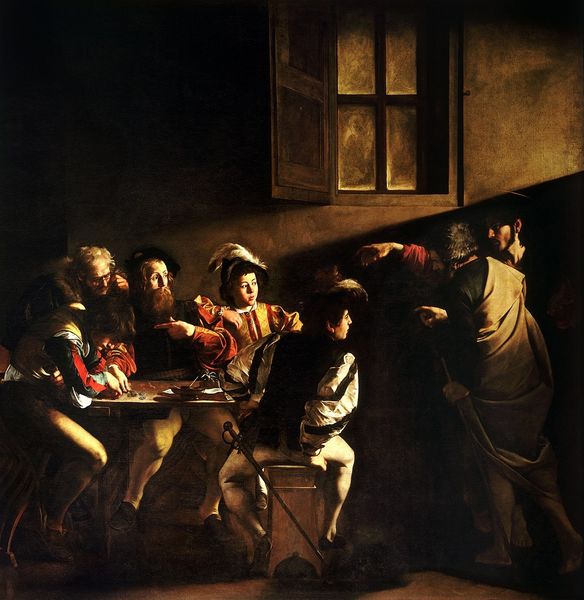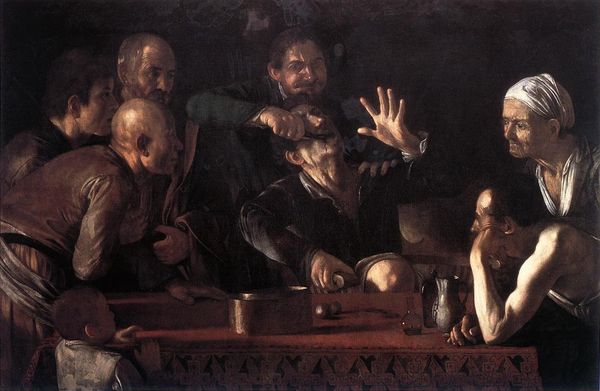
The Calling of Saint Matthew 1625 - 1630
0:00
0:00
painting, oil-paint
#
baroque
#
painting
#
oil-paint
#
figuration
#
chiaroscuro
#
history-painting
#
italian-renaissance
Dimensions: 51 3/8 × 61 1/2 in. (130.5 × 156.2 cm)
Copyright: Public Domain
Editor: This is Giovanni Battista Caracciolo's "The Calling of Saint Matthew," painted sometime between 1625 and 1630. It's an oil painting. It strikes me as intensely psychological; everyone seems caught in a moment of tense contemplation under stark lighting. What do you make of it? Curator: Indeed. The chiaroscuro dramatically spotlights the figures, heightening the psychological drama. Think about the social and political realities of the time. The stark contrast can be interpreted as a visual metaphor for the tension between spiritual enlightenment and the material world, the calling versus the comfort of one's social role, no? Where does Matthew's identity truly lie? Editor: So, it's more than just a biblical scene, but a reflection on identity? Curator: Precisely. Matthew, the tax collector, is quite literally counting his coins when this disruption occurs. His encounter confronts him. This pivotal moment also implicates us. Consider the male gaze prevalent in art history – how does that influence the interpretation of a scene depicting mostly men in deep concentration around economic activity? Editor: That adds a whole other layer. It challenges us to consider the power dynamics not just within the painting but also in how we, as viewers, approach it. Curator: Exactly! We see how Caracciolo engages in this silent dialogue. He positions this painting as part of larger conversations about social justice and personal transformation and compels us to examine our position within it. It moves past historical accuracy and moves into modern intersectional conversations about class, belief, and seeing. Editor: I hadn’t considered all of those social layers. It makes the painting much more dynamic and relevant. Curator: I'm glad. Approaching it in this way helps us truly grasp the complexity Caracciolo embedded within it, using a biblical moment to speak to timeless and very relevant concerns about identity, morality, and social transformation.
Comments
No comments
Be the first to comment and join the conversation on the ultimate creative platform.
